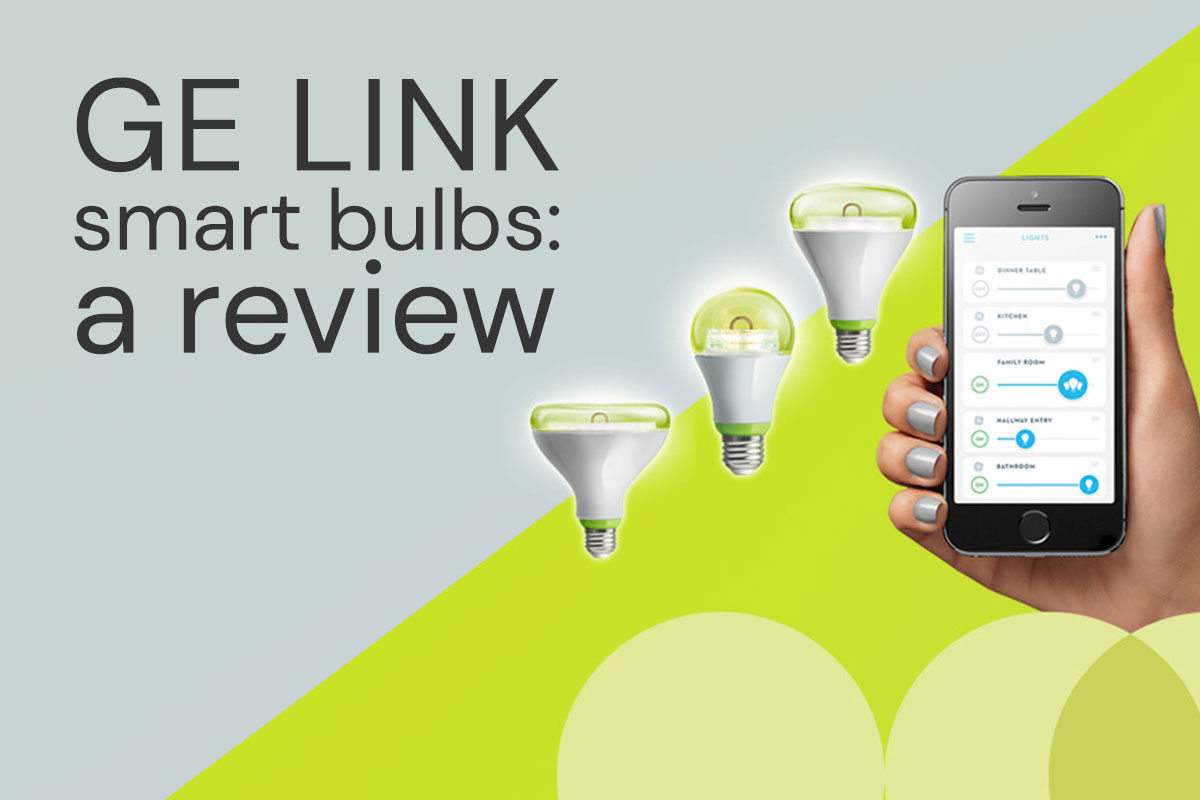As part of our series on the “Internet of Things,” we’d like to talk about a product we’ve been using with great success in concert with the Amazon Echo. LED lightbulbs are generally running in the $10 range, and often feature a rated life of up to 50,000 hours—approximately 50 times longer than a typical incandescent and 8-10 times longer than a typical CFL. Used 12 hours a day, a 50,000 bulb will last more than 11 years. So—while a $10 light bulb does sound expensive—not having to replace it for 11 years is a pretty good deal on top of the energy savings it generates. LEDs are estimated to use up to 75% less electricity than a conventional incandescent bulb, which is even more efficient than a CFL. GE’s ‘Link’ series of LED smart bulbs run about $15 per bulb, and though that certainly seems high for a light bulb, the fact that it can be integrated into your home automation system quickly and easily makes it a worthwhile purchase.
First Things First: the Wink Hub and App
GE has introduced the “Link” LED light bulb that can connect to the Internet, and can be controlled by a companion app for iOS and Android called “Wink.” The one caveat is that you’ll need the Wink Hub in order to use all these light bulbs, which can be purchased from Amazon for less than $45. The Wink Hub allows your diverse collection of smart home products to speak the same wireless language, so that you can easily control them—and customize their interactions—via the Wink app. The Wink app itself is free and elegantly designed, and it allows you to create “Wink Shortcuts” that allow you to you control multiple products with a single tap. And you can use them with the Amazon Echo. Think of turning on all the lights you use in the morning or setting the mood for a movie night with a shortcut in your Wink app, or a verbal command to the Echo.
Now for the Link Bulbs
GE Link bulbs are designed to last over 22 years when used 3 hours per day, and they use 80% less power than traditional ones. They’re easy to install; you just screw them in like you would a typical light bulb, install the Wink app if you haven’t done so already, and sync your Link bulb with the app. The app will walk you through the process of controlling the bulbs, or groups of bulbs.
You can even get really fancy with this system by using “Wink Robots.” Wink Robots let you customize the way products talk to each other, so you could theoretically set up a Kwikset SmartCode Deadbolt that tells your lights and A/C to turn on every time you unlock the front door, or set schedules to turn everything off when you go to bed at night.
From a cost savings perspective, you would typically want to use LED bulbs for the ones you leave on all the time or rarely turn on and off. This article explains when choosing LED bulbs isn’t a cost-effective option, but here’s the basic thesis:
At 30 minutes a day, an incandescent bulb uses $1.48 in electricity annually. The LED bulb uses only 25 cents’ worth. So the LED saves $1.23 per year. Since it costs $20, it will take 16 years to recoup the cost in electricity savings.
At five hours a day, the incandescent uses $15.42 in electricity annually. The LED bulb uses only $2.42 worth. So the LED saves $13 per year in electricity, meaning you’ll break even in less than two years.
Another cost consideration is that you may need a different type of dimmer switch for use with an LED bulb. This is the case for all LEDs, not Link in particular. Of course, Link is ideal for lights that you want to turn on and off regularly, and these aren’t necessarily the same lights that you’ll leave on constantly. But we feel the smart features of the Link bulb make it more valuable as a home automation device than as merely an eco-friendly device. Incandescents are being phased out (don’t worry, you can now get even obscure bulbs like an Edison bulb in an LED format), and cleaning up one broken CFL bulb is enough to make you swear them off forever. LED bulbs are the way forward, and Link bulbs are an excellent choice.
Want to talk more about the Internet of Things? Or do you have a question about smart homes that’s been bugging you? Leave us a comment or contact us for a consultation.






